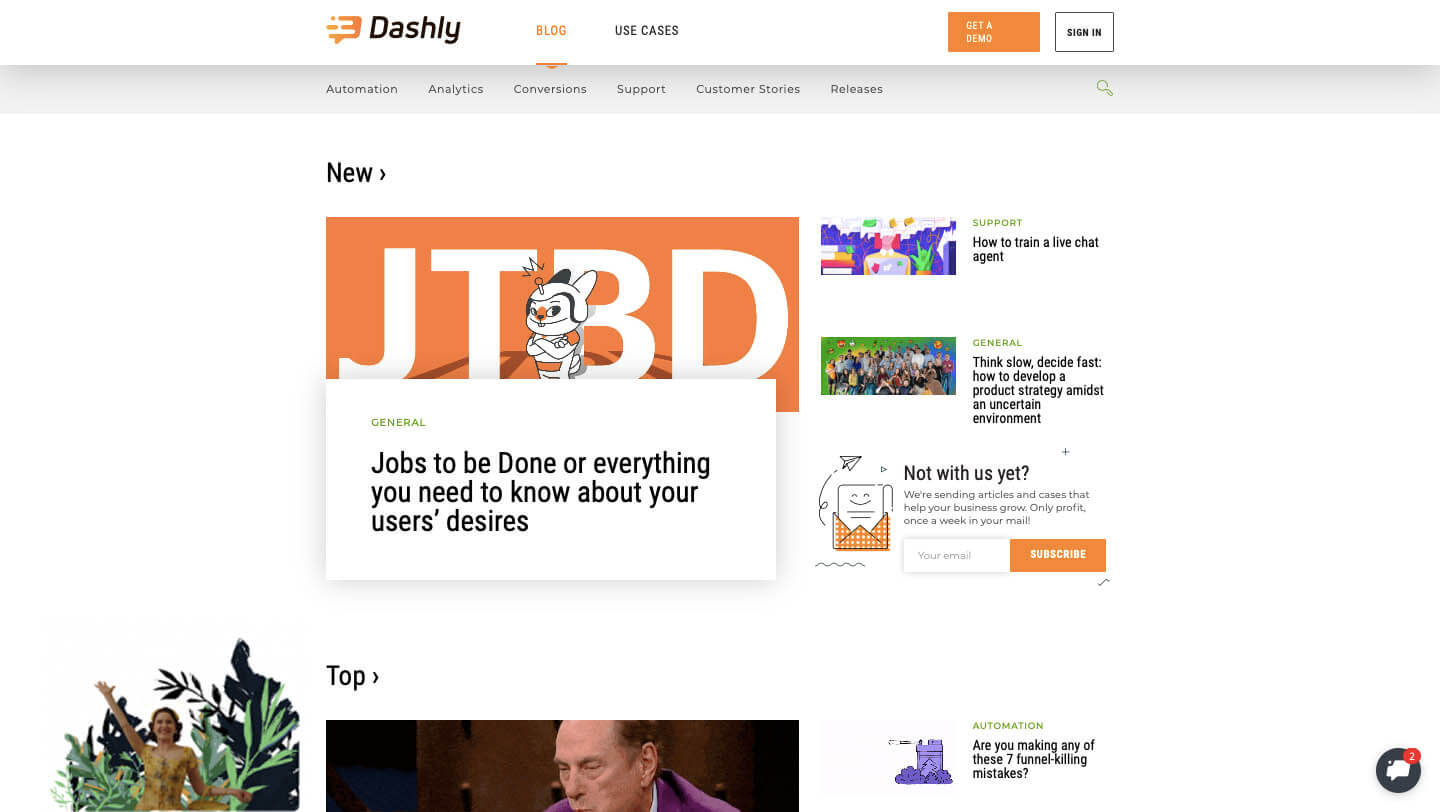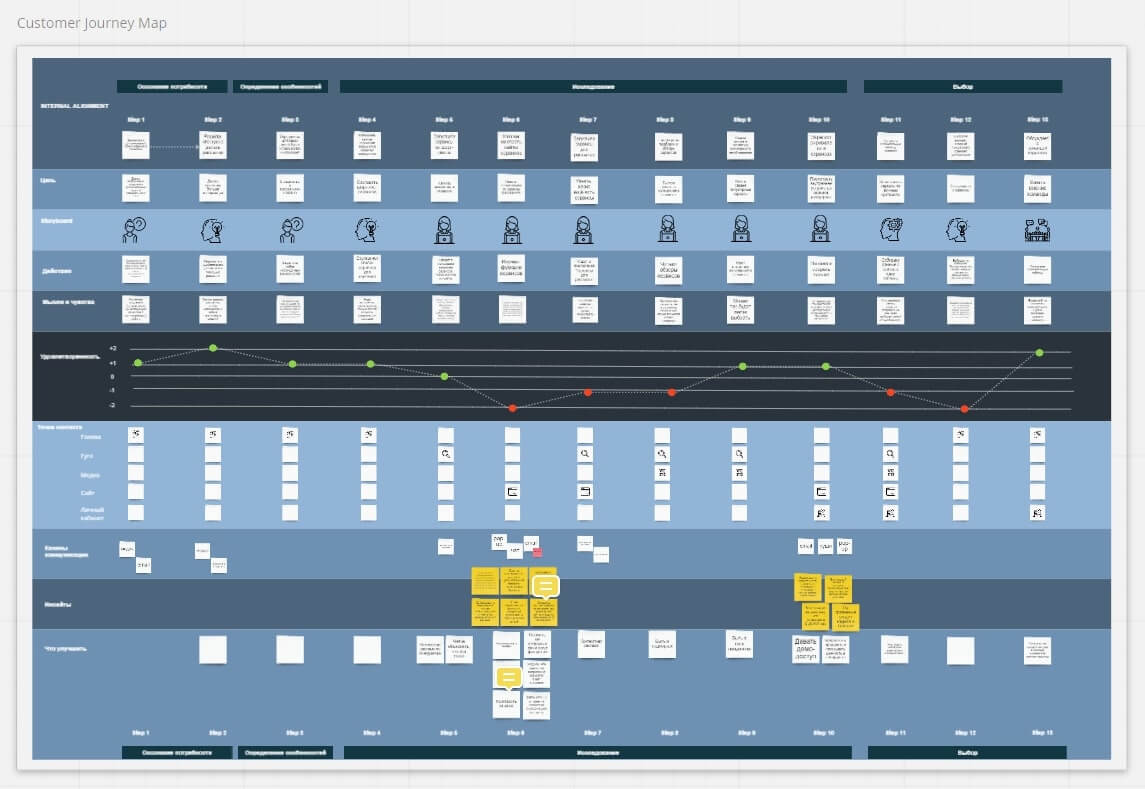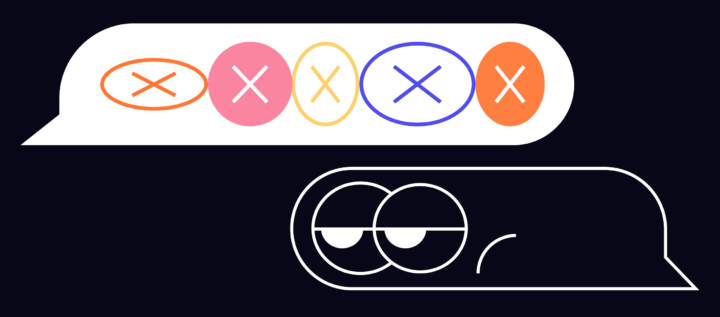How to make content marketing work: advice from Miro, Ingate, IIDF, and Dashly experts

Marketing teams encounter various issues at different stages of content marketing development in the company: from complete uncertainty and misunderstanding of what content to do and how to promote it, to the difficulty of catalogization huge amounts of content already created by the marketing team at the very beginning.
We’ve talked to Ann Savina, senior editor at Miro, Nick, course marketer at IIDF, Ann, head of marketing communications at Ingate, Helene, digital producer at the “Atwinta” digital agency, and some more marketers responsible for the content in different teams. We asked them what issues they are encountering and how they tackle them. Then, we’ll tell you how we ourselves tackled and continue to tackle similar challenges.
But first, you can watch a video to find out what place content marketing takes in your strategy 👇
When you are only launching the content marketing
“We wanted to share our knowledge, and it worked!”
“We simply believed”.
At the very beginning, the situation can be described in two words: complete uncertainty. At this stage, the team is faced with dozens of questions that no one can answer because there is no data yet:
- What are the goals to set for the content?
- Who should be responsible for content marketing?
- What to write about?
- Whether to post content in external sources or develop your own blog?
- How to measure the content’s efficiency?
What are the goals to set for the content?
The two key objectives of the content are to increase company awareness and target traffic. As marketing develops in the company, content tasks become more complex, but these two remain relevant at any stage. And in the beginning, you can only focus on them.
Who should be responsible for content marketing?
How to find a person who will take on content marketing? If you’re a small startup, it’s likely to be one of your existing employees. For example, in Dashly, content marketing was initially handled by our CEO and founder Dimitri Ive. And it was not immediately that the first marketer — Helene — joined us. And now there are 11 people in our marketing team and all of them are somehow involved in creating content of various formats, and there are several other guys in other teams who are also involved in this process.
Our advice: Look for someone who not only spells well but can tell interesting stories and is ready to do something new all the time. This person should be motivated and proactive.

At the initial stage, one person is usually engaged in everything: content planning, its creation and distribution, analytics, the search for new sites, subjects, and formats.
Where to begin?
Let’s say you’re lucky and you have at least one marketer. Pop down a dozen hypotheses about how content marketing can help your business. And start testing them systematically.
We advise you to start with articles in external sources and emails. They will allow you to evaluate, at least approximately, what subjects and materials perform best. Besides, you need a minimum amount of resources to launch them.
Issue №1: what to write about? To understand what is worth writing about, you need to “keep an ear to the ground”, that is, to be guided by advanced blogs, keep abreast of new technologies, and important discussions in your industry. But that doesn’t mean you have to write about exactly what everyone is writing about: you have to choose subjects that affect the “jobs” that your product performs.
Issue №2: does it really work at all? Most metrics at this stage are top-level; in the case of articles in external sources, you cannot always track even the number of clicks.
Focus on those metrics that you can reach. Wherever possible, add UTM tags. For articles in external sources, evaluate the number of views and clicks, compare the number of views with the views of other articles on this resource, for emails — see basic email marketing metrics and compare their values with the average values in your industry.
As obvious as it may sound, you just have to start. At first, you’ll move by touch, but as time goes by, there’ll be more and more data.
When a corporate blog appears
You see the results and go on creating your blog. There are more questions:
- How to plan content?
- How to connect content with the product?
- How to acquire traffic?
- How and when to extend the team?
What targets to set and how to evaluate the success
Targets remain the same: awareness and traffic. The purpose of the blog is to regularly drive the target traffic to the website. How to understand if the traffic is the target one? The blog has more features: you can collect more data, post links to landing pages and other articles, track all clicks. Ideally, you should track direct and associated conversions.
Start building your analytics system together with the blog.
How to plan content
There should be a blog editor who is responsible for ensuring that the content is relevant to the objectives of the product.

It’s cool if the company already has a product strategy. Then the editor can focus on strategic stakes and is additionally bound by OKRs. If there is no strategy, the synchronization is done manually. Therefore, to create content that will work for the product, you need to communicate a lot within the company. We will come back to how to do this correctly.
We started by translating the most interesting foreign articles. Then we accumulated experience and started to write our own content — expert, product, guideline articles, and describe funny stories from our experience. Many ideas were born, but not everything could be embodied. In fact, in choosing topics and formats, you will always be limited by the tasks of the product, the technical capabilities of the blog, and your own resources. That’s why it’s important at this stage to learn how to prioritize the editors’ backlog, as well as the product backlog, and to evaluate how quickly this or that article can be written and published, how many resources it will require, and how much traffic it can acquire.
How to connect content with the product
It is difficult to predict the outcomes of content marketing. Just as it is difficult to predict the success of a particular feature. It becomes even more difficult when these two tasks are connected. That is when you need to make not just viral content for the sake of increasing brand awareness but to think about how you can use the content to convert users into using the product and how you will evaluate the success of both features and articles.
In this sense, content marketing does not work by itself, but as part of product marketing; this is yet another channel.
“How do you know the article was a success? What metric do you evaluate? Views, registrations in the service, conversion rate to using a feature? You need the experience to understand how many views, registrations, code implementations are enough, and what conversion rate is normal for a release or an article”.
Olga Campbell, editor-in-chief of the Dashly blog
We are trying to plan content consciously, especially when planning product releases, but the problem of evaluating the success of the release as a whole is relevant to us, we are still learning to do it.
What helps us? The connection between the product and marketing teams. Sync up regularly to let the marketing team know what releases the product team is planning and timely prepare content for these releases. There should be a person in the product team supporting this connection. In our team, this is Helene, our PMM (product marketing manager).

Consider marketing campaigns to support your product releases in advance. Arrange regular meetings to plan your product content and understand how it will fit into the content plan and workflow of the marketing team. If an important feature release is planned, it will take time for the designer, marketer, and layout designer to develop the branding, and it will take time for the authors, blog editor and illustrator to prepare articles to support the release, etc.
We record all agreements regarding the release on a special board in Favro. Cards from this board are duplicated on the marketing team’s board so that everyone is aware of their tasks in relation to each release and their deadlines.
If the teams are aligned, it will be easier for the product team to plan the success of the releases and the authors of the articles will keep the targets of the product in their minds.
In addition, you should take into account that the help of the content team will be required not only by the product team, and you should plan resources taking into account all external requests from sales and implementation teams, and so on.
“As a team, we have a broad view of content marketing. You can practically do nothing without content. That is why we always support different teams (HR, product marketing, enterprise marketing, Sales, Customer Education, etc.) in achieving their goals”.
Ann, Senior editor at Miro
A blog is a great tool for traffic acquisition. So at this stage, the question of SEO comes up along with the task to collect the semantic kernel. Traffic from SEO is free. And, more to the point, you can manage the quality of this traffic.
To acquire the targeted traffic and lead users to the purchase, you need content that meets users’ needs at each stage of the customer journey. This means you need the right keywords. Keyword research usually involves searching for words and phrases with the largest volume of search queries and the lowest competition. But this is not the main objective because it is not just about traffic. You need to find the topics that potential customers are looking for, meet their information needs and eventually turn them into customers. The funnel stage determines customer search queries.
“We use content at different stages of the sales funnel, from the first contact with the brand to the return of the customer for a repeat purchase. For example, with the help of an article or a book, we introduce a user to the company, through a blog and emailing useful materials, we are working for loyalty, we remind customers of ourselves, and heat up their interest; while communicating with users during a webinar, we push them to contact the company. And so at every stage of the user’s journey”.
Ann, Head of marketing communications, Ingate
Design marketing funnels and generate content for different stages of these funnels.
Let us show you some examples for different stages of the funnel to avoid sounding proofless.
For the top of the funnel, there is the article “Calculating the LTV: what is so special about this metric and why everyone needs to track it”. The objective of this article is lead generation. The article acquires much traffic and many leads, and it performs its task great. And there are few registrations in the service from this article. And that’s okay.
For the middle of the funnel, there is the case “How to bring more visitors to sign up: IQ Option + Dashly”. This case acquires less traffic but generates more registrations and demo requests. And that’s also okay.
And here’s the product article about the integration of Dashly with the Calendly meeting planning service. The objective of this article is to convert customers to use a feature.
Each of these articles works at its own funnel stage and their success is measured by different metrics. These examples show how the funnel stage affects the article’s performance indicators and how content can influence the metrics.
How and when to extend the team?
The team is the key. But the team list depends on the tasks. While there are few tasks, they can be performed by one person. But their hands, knowledge, and skills will sooner or later be not enough.
As the lead generation task in the blog appears, you need a developer resource to help you embed the necessary forms in the blog, and the designer to render them. The more ambitious your blog is, the more resources you spend on each article. And each one should be properly, vividly, and recognizably illustrated, that is, you need an illustrator’s resource. Setting up multiple automated messages according to the number of lead forms in the blog should be done by a marketer. An SEO specialist should know how to study the search queries to draw the terms of reference for the article. There should be more and more data collected, and then an analyst comes on the stage.
But first of all, the secret of a good blog is in the authors and understanding the tasks of the product and content. Pay attention to finding motivated authors, onboarding them into a team, and help them develop. Authors with a clear understanding of the product tasks will generate cool ideas and implement them. That’s why we support the creation of the editors’ office, not the involvement of freelance authors.
Often, all these people, except the authors, are already in the team at the moment when these tasks appear. But you need to make sure that the editors have access to their resources and that their resource is enough.
Some more pieces of advice:
- Remain flexible
Don’t become too obsessed with subjects, headings, and formats; you should always be ready to generate the content you need at the moment, not the content you planned a month ago in the content plan.
“We are always interested in how we can help our users at the moment as we want our content to solve their problems. It’s not so important for us that we have five posts a month in each section”.
Ann, Senior editor at Miro
- Look for your tone of voice develop editorial policy
Any company needs its own recognizable voice and its own language. For this purpose, editors usually develop an editorial policy which is the document where the key principles of working with content in the company are specified.
“We are trying to reconcile smart, useful product content, self-ironic content, and good taste”.
Olga Campbell, editor-in-chief of the Dashly blog
- Turn your experience into knowledge and share it
Business tasks are surely at the forefront, but your experience can be necessary and help someone. Generate content that will be useful. Besides, it’s the useful content that works.
- Create a community
Share your experience with other teams to make your content more interesting.
Read also:
👉 Live Chat Best Practices: 20 Hacks to Make Customer Service Better
👉7 Best Live Chat for eCommerce: Boost Conversion on your Website
👉 Top 5 live chat mobile app: find the best fit for your business
👉 Live Chat: How Online Chat Tool Can Help Your Business
👉 20 Best Live Chat Software for your website chat service
👉 Acquisition funnel marketing: Grow customer conversions at each step of user journey
👉 The top 15 inbound marketing tools: harness digital power and elevate your business
👉 10 best website personalization tools to deliver top-notch visitors experience
👉 7 best email capture tools: features and pricing compared for 2024
How to improve the efficiency of content marketing
You have learned how to plan: you have a content plan and you are practically able to follow it. You did not just decide on the subjects to write on, but you generate content for different segments and for different stages of the funnel. It’s time to set up the system lead generation and think about the customer journey in more detail so that the content is not wasted.
How to arrange systematic lead generation via content
Why do you need to systematize the lead collection process? To make every article, every project work for you. You cannot only write product articles as they are not interesting to a wide range of people as opposed to expert articles. But expert articles, as we know, acquire few registrations. So your task is to build a system that would allow you to build communication with each blog visitor and nurture them and bring them to the purchase or other target action.
There are many ways to set up lead generation using content, both on the blog and on product landing pages: from pop-ups and lead forms to chatbots. You can use the universal email subscription form, lead magnets (checklists, cheat sheets, and other useful materials), automated chat messages or customized widgets.
For example, this one:

Try to make the contact collection forms inside a blog as native as possible: embed them visually into the design of the blog itself and a specific article. At the same time, they should work, and therefore not be invisible.
Lead magnets are good in that they fit the “first-give” approach: asking for contact details in exchange for really useful information is no shame. In addition, lead magnets help you qualify leads: you know who needed a product research cheat sheet and who downloaded the 12 rules of conversional writing. And these are probably different segments that you will interact with in different ways.
Lead generation via content can be set up not only in the blog but also on product landing pages. Offer to download a guide, a map, or a book, come up with your own suitable formats for download.
Format experiments
If we go down, there will be cases, guides, checklists, books, email courses, video courses, webinars, and podcasts. New formats and new tactics.
“In the Miro content team, we are always ready to try new formats and tactics. We don’t think that content marketing is just about blog posts, and we’ll write posts no matter what happens or what the task is”.
Ann, Senior editor at Miro
Stay flexible and goal-oriented while increasing the number of formats.
“We’re trying to build on our objectives. If there is a big marketing campaign and the guide can acquire a lot of traffic, we will focus on it”.
Ann, Senior editor at Miro
But it’s not enough to produce content, you have to learn to correctly evaluate its performance.
“I’m for any movement, but I want to know if it works”.
Nick, Course marketer, IIDF
How to evaluate the success of the content
“There is no specific straightforward metric to objectively evaluate the content effectiveness”,
“It feels like the content influences everything and nothing at the same time”, “efficiency is evaluated at the sensory level”,
“The link between content marketing and sales is only at the level of senses, not the level of numbers”,
“Customers say the statistics don’t show anything”, — here is what some marketers told us during interviews.
For a long time, we also had a poor understanding of how to evaluate the content’s performance. Then, we started building our own analytical system and began to understand things better.
The choice of metrics depends on the tasks you set for the content. Decompose the “performance of the content” into the jobs it does: acquisition, retention, and increasing brand strength and awareness.
- Acquisition
It’s not difficult to evaluate the article as an acquisition source — you only need analytical tools.
- Retention
Content can be involved in retaining customers and building the product’s credibility. Content is the easiest way to transmit the knowledge you need to immerse yourself in the product. It is much harder to evaluate this effect. For thisб you need more data, in B2B, such data is more often not enough.
- Brand strength and awareness
Can a blog have a different impact on the business? Finding the answer to this question is a big creative analytical task. You can conduct sociological research. This research will be qualitative, that is, with its help, you’ll be able to record the existence of the effect, but you won’t be able to quantitatively evaluate this effect.
Truth be told, only direct customer acquisition through content can be quantitatively evaluated. The rest of the “content jobs” are hard to evaluate to the extent we need them. All that is left is to believe.
Our advice:
In addition to directly acquiring customers through content, improve the metrics that unidirectionally affect all “content jobs”. For example, engagement-specific metrics. Choose different metrics for each product or a blog. You can measure the number of pages viewed or the session duration.
When it comes to lead generation, evaluate changes in your subscribers base. If you have a task to qualify leads with content, evaluate the effectiveness of content by how many qualified leads you pass from the blog to the sales team.
Creating a comprehensive analytical system allows you to look further. It allows both assessing the effectiveness of each piece of content at different time intervals and of different user cohorts (for example, those who first visited your website in March). If your analyst is as good as ours, they can show you how many registrations, code implementations, payments, repeat payments and so on each of your articles have brought. Therefore, this system radically changes everything: you look at analytics and see what content really works and which doesn’t, and you can objectively evaluate the success of your blog experiments.
Reports can be made in Power BI, and data can be visualized in Datastudio.
“Rick is an extremely great tool”.
Olga Campbell, editor-in-chief of the Dashly blog
Build an analytics system and assemble your data team.
How to embed content into CJM
When a lot of content is produced, there appears a lot of routine work. You want to use it more than once: post it on a blog and send it via email. And use it as efficiently as possible, so that it somehow influences the decision to make a purchase. To do this, content must be embedded into the CJM — customer journey map.
“A person reacts better to ads if they’ve dealt with content before”.
Helene, digital producer at the “Atwinta” digital agency
It’s time to do some research! Learn how your customers make their purchase decisions. What questions do they ask themselves, which sources they address, what do they think and feel at different stages?
We’ve recently done that research. We studied the objectives, actions, thoughts, and feelings of our customers at different stages of decision making from need recognition through identifying peculiarities and exploring opportunities to making their choice. That’s what the map that we’ve come up with looks like:

This map gave us a more complete picture of what touchpoints customers have with the product and content, what channels are relevant at different stages of decision making and how we can shorten the user’s journey to registration in the service. This is how we learned what content we lack and where to offer it to users. It turned out to be so cool that now we try to build the CJM for every feature or project.
How do you embed a specific article into the existing user interaction map? When an article is about 80% ready, the author shows it to the marketer.

The marketer considers how the article will work for lead generation, where and what lead forms can be embedded, and whether you can somehow segment leads in this article.
“I ask myself the question: ‘What is the simplest thing a person can do when reading this article?’
Polly Shields, Marketer at Dashly
The proposed action depends on the value of the content and the stage of the funnel. Thus, with the help of expert articles, you can collect emails, and in cases or product articles, you already can offer to apply for a demo or lead a user to the registration. The same is true for books because they are a more substantial artifact. The more valuable content you offer, the more you can ask for in exchange.
“The ‘tax’ should be proportionate to the benefit a person gets”.
Polly Shields, Marketer at Dashly
Everyone involved in content production needs to know about every piece of content at the planning stage, for which audience segment and for which part on the user’s path to purchase it is being created.
Challenges encountered by modern content teams
You already have a big team, for example, more than 10 people. And there are a CRM marketer, an editor, several authors, a layout designer, designers, an analyst, and somebody is actually a video maker.
What are the tasks that such teams face:
- Personalization
Let’s assume the lead generation was established with the help of different tools. But you want to personalize it more. The CJM and data-based user segmentation will help.
- Catalogization and content reuse
“One of the main challenges is to categorize the content and make sure other teams can find it and use it for their own purposes”.
Ann, Senior editor at Miro
“In our work, we apply the ‘lean content’ policy; we think about how to prolong the life of this or that piece of content with minimal effort. For example, we write many articles on the basis of the existing content: this includes articles on books, reports of our specialists at industry events, webinars, cases”.
Ann, Head of marketing communications, Ingate
- Creating your own methodology, both internal and public
An internal methodology should be developed so that all team members know what methods are worth applying to content and how to effectively use all available tools. To do this, all of the tools, methods, and tactics you use can simply be described in an internal document Notion.
“We are constantly experimenting and trying new things, and after each project, we put the knowledge we have gained into the public knowledge base and share the lessons and results with the team”.
Ann, Senior editor at Miro
The public methodology is needed in order to successfully communicate the experience that your team has accumulated.
- Synchronization with other teams
How can you sync up all teams? Using a well-decomposed strategy and the OKR framework.
“The meaning of the OKR framework is in the synchronized effort. Marketing objectives are based on company objectives, content marketing objectives are based on marketing objectives. This makes it possible to always be sure that what we do is in full compliance with the company’s objectives”.
Ann, Senior editor at Miro
- Idea criticism and verification
“There are always so many good ideas. You need to constantly check how your idea helps other teams and solves a business challenge”.
Ann, Senior editor at Miro
Checklist
- Assemble a team and provide development opportunities. Develop the technical capabilities of a blog.
- Explore the user’s path: design marketing funnels and the CJM.
- Apply the “lean content” policy.
What to do if the content team needs to start working out of office
There are teams that were originally assembled to work out of office. Others have to adjust. We’re going through this right now. And here are some pieces of advice.
- Move all the existing team rituals online and make them mandatory
We had many rituals, but not all of them were mandatory. You could skip the team meeting and then come over and ask the guys what was going on. But under the circumstances, it became unacceptable. It’s important to get first-hand information. In addition, the opportunity to be with the team and take part in the discussion became more valuable.
- Join team calls each from your own device
Even if several people in the office can gather around a single laptop, it’s better for everyone to connect from their own devices and pretend that everyone is in different places. This makes communication easier: you can hear better and no one feels disconnected from the team.
- Don’t forget about informal team communication
This is especially important for creative teams. We have always adhered to the principle that the team should be located in one place. And it made sense: a lot of ideas about how to make cool, smart and timely content and how to promote it came to us during the daily jokes over morning coffee.
And when we had to switch to a new working pattern, it became a problem. We decided that we needed to keep this informal relationship because it was a team workflow driver. It wasn’t just about ideas, it was more about emotional support for the team. That was also proved by the recent team value survey that we carried out.
The first informal team call at lunch was terrible: those who were still in the office, gathered around a laptop, someone was passing by all the time, we did not hear what the guys in the laptop were saying, the jokes ended quickly, the guys from home showed their cats and we separated frustrated. But we didn’t surrender and went on! By the end of the first week, all the awkwardness was gone and the connection was restored — we keep making jokes and supporting each other, but now virtually.
Support each other and don’t lose faith in content marketing — it actually works!
Read also:
- The best way to collect emails: 5 top-notch methods unveiled
- 3-step guide on inbound lead qualification: how to qualify inbound leads on autopilot
- Choose your ideal lead nurturing platform: Top 10 software tested by experts





![Autofunnel complete guide: what is it and how to design + [free checklist]](https://www.dashly.io/blog/wp-content/uploads/2020/02/funnel-720x297.gif)
